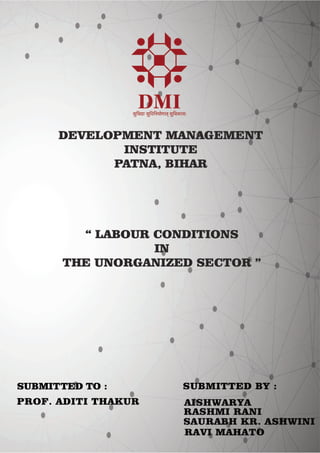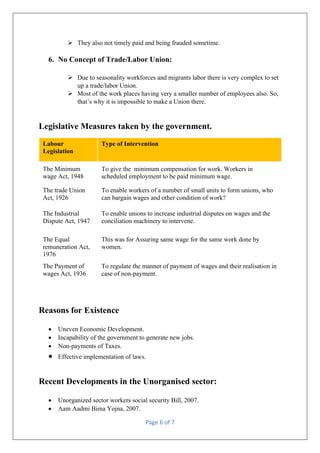The document discusses the unorganized sector in India. It begins by defining the unorganized sector and noting that it generates over 50% of India's GDP. It then outlines the key differences between organized and unorganized labor. It categorizes unorganized labor into four groups: occupation, specially distressed, service categories, and nature of employment. It details the characteristics of unorganized labor such as lack of protections, debt bondage, and irregular hours. It also discusses the advantages and disadvantages of working in the unorganized sector, such as direct interaction with employers but lack of job security. Recent government measures for the unorganized sector are also mentioned.







